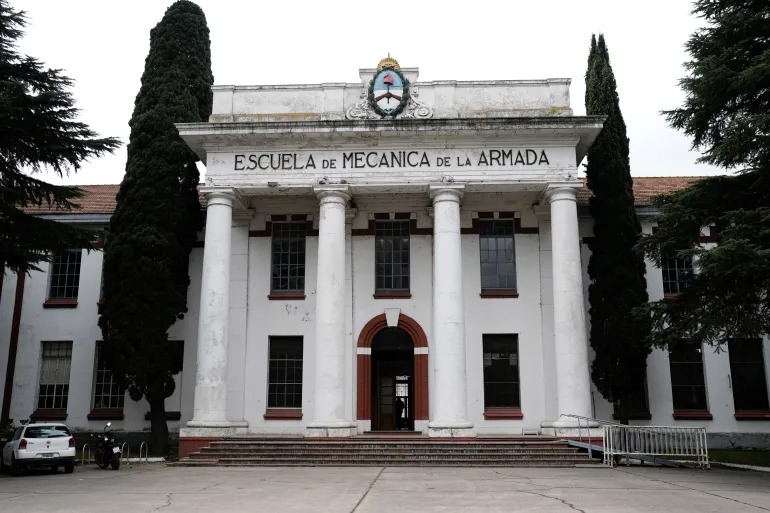In a landmark decision, the United Nations Educational, Scientific and Cultural Organization (UNESCO) has designated the Argentina Navy School of Mechanics (ESMA) as a World Heritage site, recognizing the dark chapter of state-sponsored terrorism during Argentina’s dictatorship from 1976 to 1983. Outgoing President Alberto Fernández, who expressed gratitude to UNESCO for this designation, stated that it would shine a spotlight on a history that some wish to conceal. This move aims to ensure that the horrors endured by the thousands who disappeared behind the walls of ESMA are never forgotten.
Preserving a Grisly History
The Navy School of Mechanics, once a military school, served as a secret detention center during Argentina’s dictatorship. President Fernández conveyed the gravity of the situation to UNESCO, describing ESMA as a place that exemplified the worst aspects of state-sponsored terrorism. It was during this period that as many as 30,000 people lost their lives, with their fates remaining unknown, as they simply vanished in military custody. ESMA was among the earliest and largest of the detention centers, strategically located in Buenos Aires.
ESMA’s layout was transformed into a site of unimaginable torture, and it even included a maternity ward where pregnant detainees had their newborns taken from them, often to be adopted into families aligned with the dictatorship. The crimes committed at ESMA were systematically concealed, with workers going to great lengths to hide evidence, such as removing staircases leading to the basement where torture took place.
In 2007, ESMA was repurposed as a museum to remember the human rights abuses that occurred on its grounds. This year, the museum acquired an airplane used in “death flights,” a horrific practice where prisoners were drugged and thrown into the sea mid-flight, often alive. These displays aim to ensure future generations remember the tragedy and emphasize the importance of democracy.
A Defiant Message Against Denialism
UNESCO’s decision to include ESMA on its World Heritage list is not only a recognition of its historical significance but also a powerful message against denialism. Some high-profile politicians in Argentina have been criticized for downplaying the brutality of the military dictatorship, with even the vice presidential candidate, Victoria Villarruel, under scrutiny. Javier Milei, a right-wing populist, emerged as the frontrunner in recent elections, further raising concerns about denialism.
However, Argentina’s Human Rights Secretary, Horacio Pietragalla Corti, sees UNESCO’s decision as a rebuke to those who seek to ignore the human rights abuses that took place at sites like ESMA. Corti emphasized, “This international recognition constitutes a strong response to those who deny or seek to downplay state terrorism and the crimes of the last civil-military dictatorship.”
Preserving Memory and Seeking Justice
In his address at the UN General Debate in New York, President Fernández welcomed the UNESCO designation as a powerful defense against denialism. He stressed the importance of preserving memory and vowed, “By actively preserving memory that the deniers want to conceal, we will make sure that this pain will never again be repeated. In the face of these crimes against humanity, our solution is not revenge but justice, precisely because we know the horror represented by the disappearance of 30,000 human beings.”
As UNESCO continues its 45th extended session in Riyadh, Saudi Arabia, the inclusion of ESMA on the World Heritage list serves as a poignant reminder of the atrocities that occurred during Argentina’s dark period of dictatorship. It underscores the importance of acknowledging and learning from history to prevent such horrors from happening again.
















